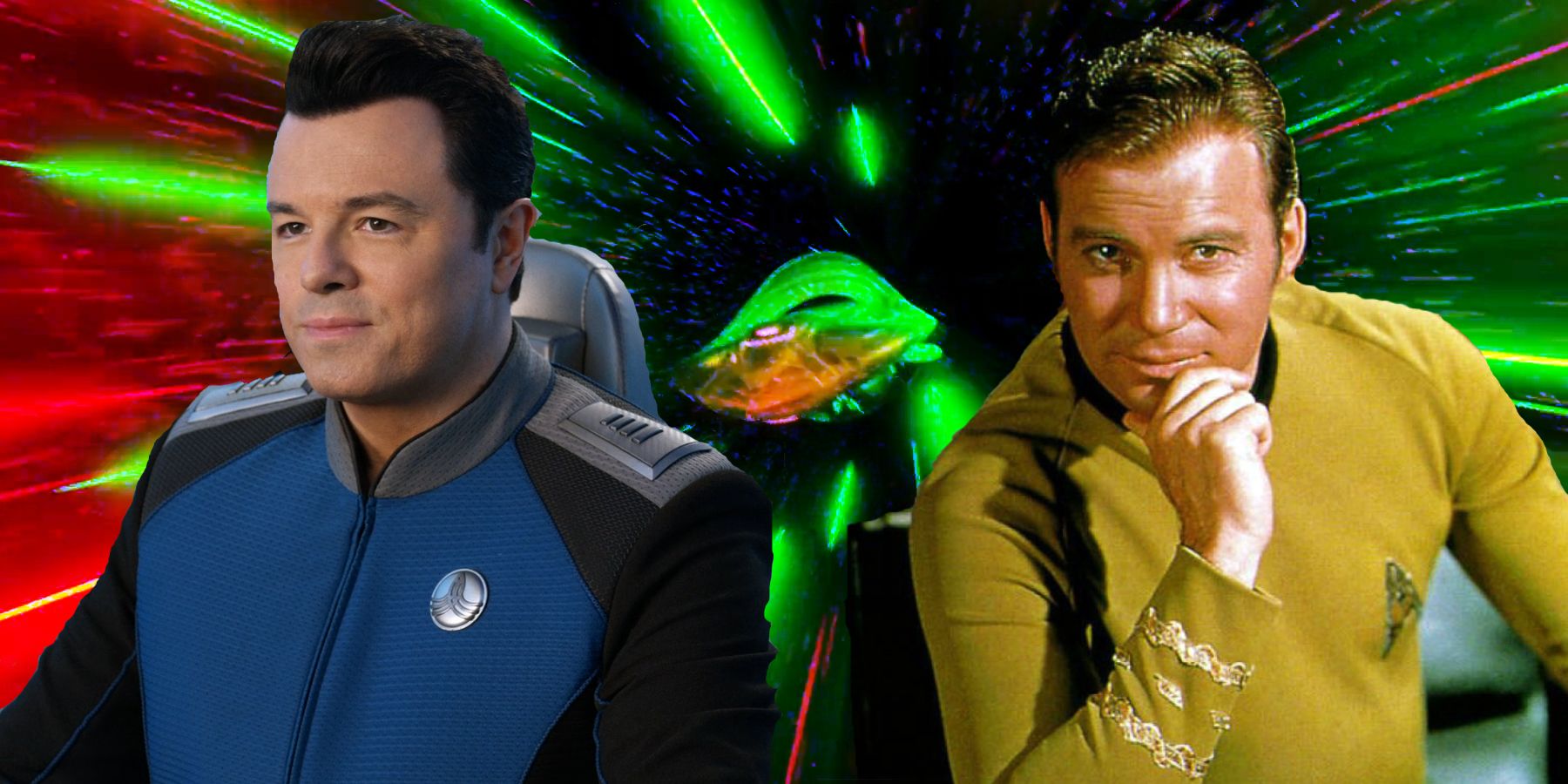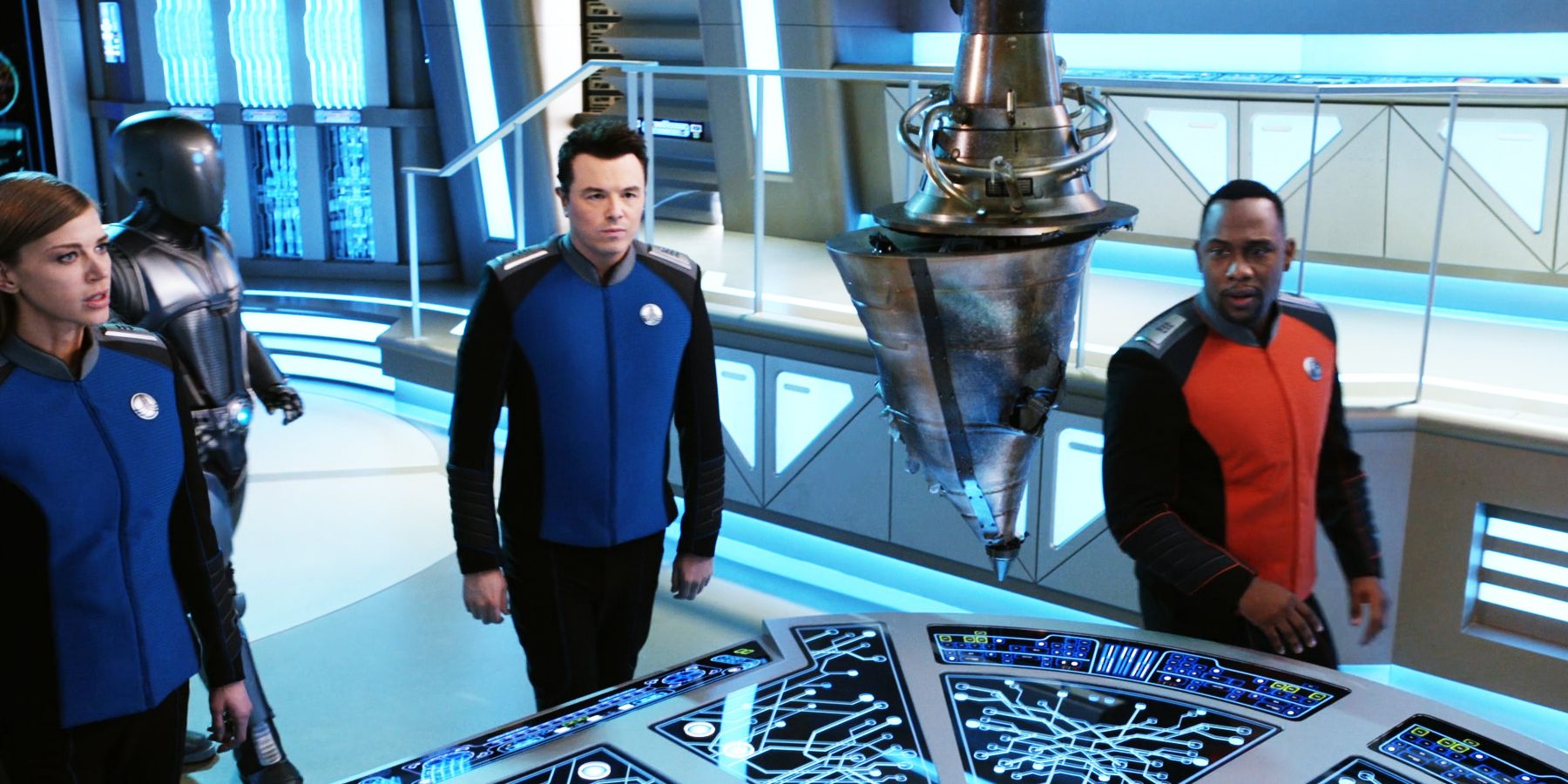Warning: SPOILERS for The Orville season 3, episode 6, "Twice in a Lifetime."
The Orville's titular starship has just outdone the slingshot effect perfected by Kirk's Enterprise. In Star Trek: The Original Series, the Enterprise deployed this maneuver to travel backward and forward in time in the episodes "Tomorrow is Yesterday" and "Assignment: Earth" and in the movie Star Trek IV: The Voyage Home. In essence, the Enterprise accelerates around a nearby star, using its gravity to increase its speed even further and break the time barrier. Aided by the precise calculations of Mr. Spock (Leonard Nimoy,) the crew could navigate to the correct point in time. Kirk's Enterprise maneuver was recently deployed in Star Trek: Picard season 2 and was even retconned as the Pike maneuver in Star Trek: Strange New Worlds.
The Orville season 3, episode 6, "Twice in a Lifetime" requires the crew of the Orville to travel back to 2015 to rescue the stranded Gordon Malloy (Scott Grimes). However, they miscalculate slightly and arrive ten years too late to rescue him. After eventually solving the problem and traveling to the right decade, the Orville's temporal device is ruined, requiring them to come up with an alternative to the Enterprise's slingshot effect, to avoid being stranded in the past.
Faced with the prospect of being stranded in 2015 by the broken Aramov Device, Captain Ed Mercer (Seth MacFarlane) and Chief Engineer John LaMarr (J. Lee) discuss the possibility of spending 6 months repairing it. After all, Ed notes they "can't just fly into the future without it" which gives LaMarr a flash of inspiration. Rather than slingshot around a nearby sun, like Kirk's Enterprise in TOS has done previously, the Orville merely needs to plot a 400 lightyear roundtrip.
How And Why The Orville Updates The Kirk Maneuver
Stranded in 2015, the Orville is 400 years away from home with no prospect of returning without the use of the Aramov device. As this revelation comes toward the end of the episode, Orville viewers are likely expecting this to be swiftly resolved. The resolution comes from Lamarr, who proposes taking advantage of the time dilation that occurs while experiencing lightspeed. Unlike in movies like Interstellar or Lightyear, Star Trek's starships never had issues with time dilation while attaining warp speed. In The Orville, it's revealed that Union starships have a protective quantum bubble that ensures time passes at the same rate both inside and outside the lightspeed lattice.
This quantum bubble removes the need for The Orville to introduce Star Trek's slingshot effect. The alternative presented by LaMarr is to disable the protective bubble and divert as much energy as possible to the ship's drive to allow them to attain 99.9999% the speed of light. At that speed, it becomes possible for the Orville to travel 400 years into the future in a matter of minutes. As with Star Trek's slingshot effect, the ship still requires accurate calculations from their resident emotionless being and also requires the helmsman to plot a safe course that avoids dangerous collisions. It's presented as a more comfortable way to travel than Kirk's slingshot maneuver, with the crew pausing to watch decades pass by from the comfort of their seats. This new way to time travel once more shows how The Orville is inspired by but also improves Star Trek tropes.
The Orville: New Horizons releases new episodes Thursdays on Hulu.


